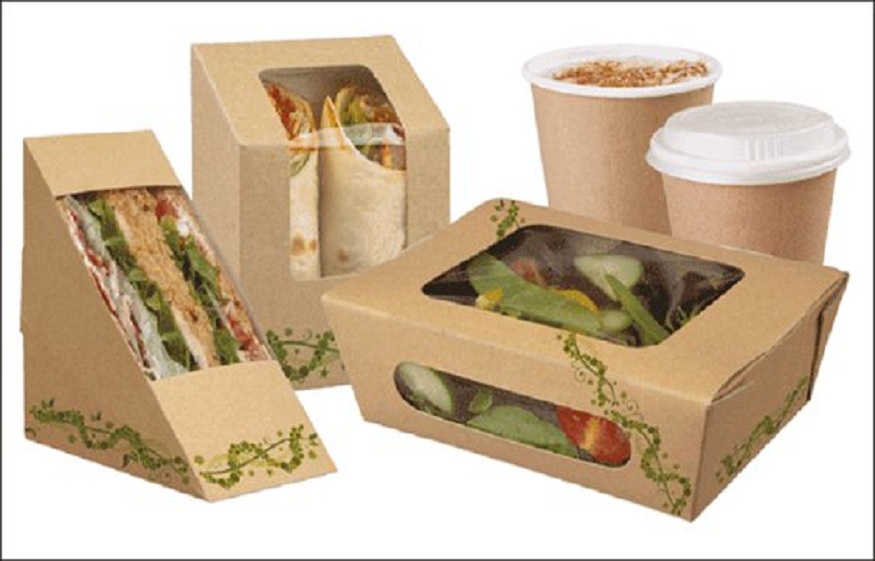The world is facing an increasingly alarming environmental crisis, and the largest contributor amongst these is food packaging. Plastic containers and non-recyclable covers are common in the food industry, and they stay intact for centuries before adding to land and water pollution. As sustainability needs become unavoidable, consumers and most businesses are embracing eco food packaging as a substitute. The trend of moving towards biodegradable, compostable, and recyclable food packaging must occur in an effort to cut down on pollution and preserve the world for generations to come.
- The Environmental Impacts of Traditional Food Packaging: Plastic waste is now the worst environmental threat, though. Plastic is non-degradable and contributes to landfills being filled with trash, water being poisoned, and wildlife being killed. Plastic waste amounts to millions of tons each year that go into the environment and last centuries. Even if plastic disintegrates, it forms microplastics, which also pollute water and food. The mitigation of this pollution is essential, and substituting harmful packaging material with green alternatives is the solution.
- Why Eco Food Packaging Is the Need of the Hour: Conventional plastic packaging is against its green alternative, because the alternative can either biodegrade naturally or get recycled. Paper, bioplastics, and compostable fibers, for instance, perform just as well as plastic but are eco-friendly. There exist packaging materials that are biodegradable and dissolved in months, minimizing waste in landfills significantly. People have become more conscious about the environment with the growing demand for such alternatives. Not only does green packaging save the world, but it also benefits companies and customers in terms of helping to bring about a greener future.
- The Business Role in Promoting Green Packaging: The food and beverage sector have a lot they can do to help minimize packaging waste. They can reduce plastic waste and act as role models for sustainable consumption by making use of green products. Firms now spend money on eco friendly disposable food containers to minimize their footprint on the earth. Governments also have more stringent policies mandating regulations on the use of plastic, requiring companies to make a transition to green packaging. This awareness is developing a culture that is not only sustainable by choice but by law.
- Green Food Packaging Innovations: The prospects of green packaging are bright with technological advancements. Researchers are developing new materials that are not only biodegradable but also durable and functional. Biodegradable food packaging from natural ingredients such as seaweed and food packaging from crop wastes such as sugarcane fiber are among the most promising advances in green packaging. The new materials reduce plastic usage without sacrificing the quality and security of the food product. Green alternatives will surely revolutionize the packaging industry and provide greener alternatives.
- The Economic Benefit of Shifting to Green Packaging: Despite the fact that green packaging is expensive, it can rather easily be cost-saving in the long run. Environmental packaging products limit wastage handling costs and even benefit the brand name with increased green consumerism. Companies have noted improved customer loyalty upon the adoption of environmentally friendly packaging processes. Apart from this, during peak demand, green material production is proving to be an economical process. The majority of the governments of the world also provide incentives to those companies whose packaging material is bio-degradable and recyclable. All these economic advantages make green packaging a wise future investment.
- How Sustainable Packaging Contributes to a Circular Economy: Eco-friendly packaging makes this possible by preventing waste material from ending up in landfill. The entire eco-friendly packaging can either be composted or recycled to reduce the generated waste. As opposed to plastics that are mostly discarded after usage, biodegradable products provide an opportunity to develop a cycle economy where packing waste still becomes new products. This is a welcome shift for saving resources and, as an added advantage, less harm to the environment.
- The Government Policies on Waste from Packaging: Several nations have banned single-use plastics and forced businesses to utilize sustainable substitutes. Governments worldwide are enacting legislation to ban plastic waste and encourage green packaging. Packaging regulations become quite strict, and companies are being forced to rethink their packaging. In some nations, there is an obligation that a minimum percentage of the packaging material employed is recyclable. Not just is this favorable to environmental preservation, but it also offers an arena for creative packing solutions. Sensible legislation makes sustainability the norm and not a choice.
- Challenge in Transition to Sustainable Packaging: Despite the benefits, there are challenges in employing sustainable packaging at a large scale. The largest of these is the transition cost to sustainable materials, which may be high and off-putting to firms. Although biodegradable packaging has reduced in price, there are still firms that struggle to abandon plastic altogether. Second, certain biodegradable elements have specific conditions that they must break down well, and this becomes a waste management issue within certain areas. Proper disposal mechanisms and sensitiveness at the population level are required in a bid to make environmentally friendly packaging work effectively. These kinds of barriers ought to be addressed as a collaborative effort by governments, consumers, and companies.
- How Individuals Can Make a Difference: Governments and industries play a great part in reducing wastage with their packaging. Individuals, however, have the option of contributing to the effort. Small changes in one’s life can go a long way in terms of sustainability. Buying things that contain very little packaging, recycling containers and bags, and disposing waste in the proper place are certain methods in which individuals can contribute. Encouraging firms adopting green packaging motivates others to do so and use the green method. When people live sustainably at scale, they create a magnificent positive influence globally.
In conclusion, with increasing awareness and improved technology, there will be more creative green packaging solutions ahead. Easy access to food packaging containers online has made it convenient for businesses and consumers to opt for eco-friendly packaging. With more and more people adopting sustainability, green packaging will become the standard and eliminate toxic plastics once and for all. We can create a world where we no longer fear packaging waste if we act ethically today.

